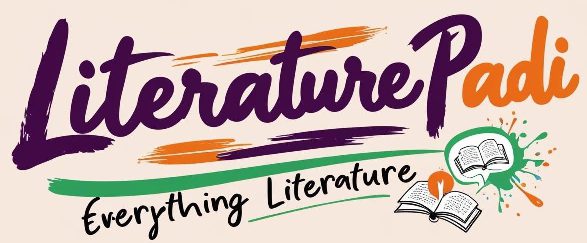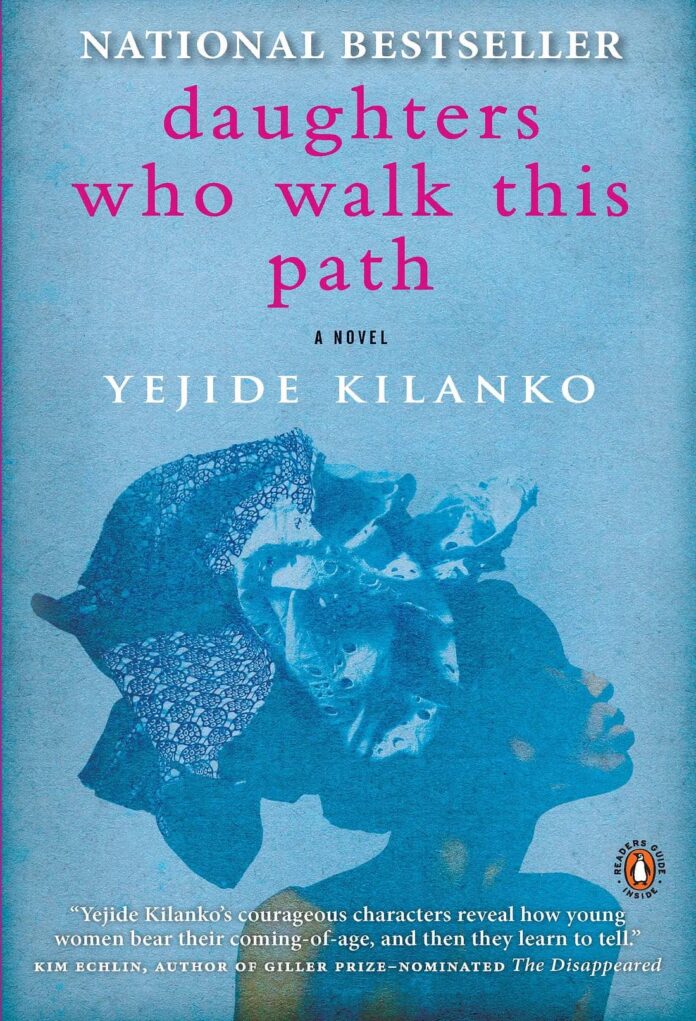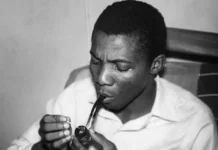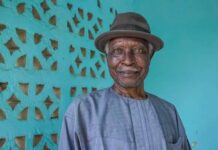🎉 Holiday Promo! Get Study Guides for 10+ WASSCE Texts — Just ₦5,000 (July 27 – Sept 18)
Daughters Who Walk This Path by Yejide Kilanko is the traumatic coming-of-age story of Morayo that mirrors the painful truths that many African girls carry in silence. The story takes place in Ibadan during the 1980s. It captures the everyday life of a Nigerian middle-class family dealing with common issues like superstition, patriarchy, and silence around abuse.
The author, Yejide Kilanko, is a Nigerian-Canadian writer and therapist. She was born in Ibadan, Nigeria, but moved to Canada in her adult years and works in children’s mental health. Her background as a therapist is reflected in how sensitively and deeply she explores trauma, healing, and emotional struggles in the novel.
In the time and place Daughters Who Walk This Path is set, gender roles were sharply defined. Girls were expected to be modest, quiet, and obedient, while boys were allowed more freedom. Discussions around sexual abuse were considered taboo. This culture of silence plays a big role in why Morayo’s trauma goes unspoken for so long.

Plot Summary of Daughters Who Walk This Path
Daughters Who Walk This Path tells the story of Morayo, a young girl growing up happily in Ibadan, Nigeria, in the 1980s. At first, her life is full of love. Her parents care for her, she has a close friendship with a boy named Kachi, and she enjoys spending time with her younger sister, Eniayo, who was born with albinism.
But things change when a cousin called Bros T comes to live with the family. At first, he seems nice. But soon, he starts to sexually abuse Morayo. He warns her not to tell anyone, or he will hurt her sister too. Morayo is scared and confused. She wants to speak up, but she feels ashamed and afraid that no one will believe her.
Eventually, Morayo tells her parents. They send Bros T away, but they don’t comfort Morayo or talk to her about what happened. Her mother becomes distant, and Morayo feels even more alone. She begins to struggle with feelings of shame, guilt, and sadness.
The only person who truly helps her is her Aunty Morenike, who also suffered abuse when she was younger. Morenike listens to Morayo, supports her, and teaches her that the abuse was not her fault. This relationship helps Morayo start healing, but the road to recovery is long and difficult.
As Morayo grows older, she tries to take back control of her life, but sometimes she makes harmful choices. She becomes involved with many men in university, thinking it will help her feel powerful again. But deep down, she is still dealing with pain and self-hate. There is a very sad moment when Morayo thinks about ending her life, but Aunty Morenike stops her just in time.
Later, Morayo reconnects with Kachi, the boy she liked when she was younger. They fall in love again, and this time, their relationship is healthy and supportive. They get married, and for the first time, Morayo feels truly happy and at peace.
But the story also has its sad parts. Aunty Morenike dies, and this loss deeply affects Morayo. Still, her death pushes Morayo to keep moving forward and live fully.
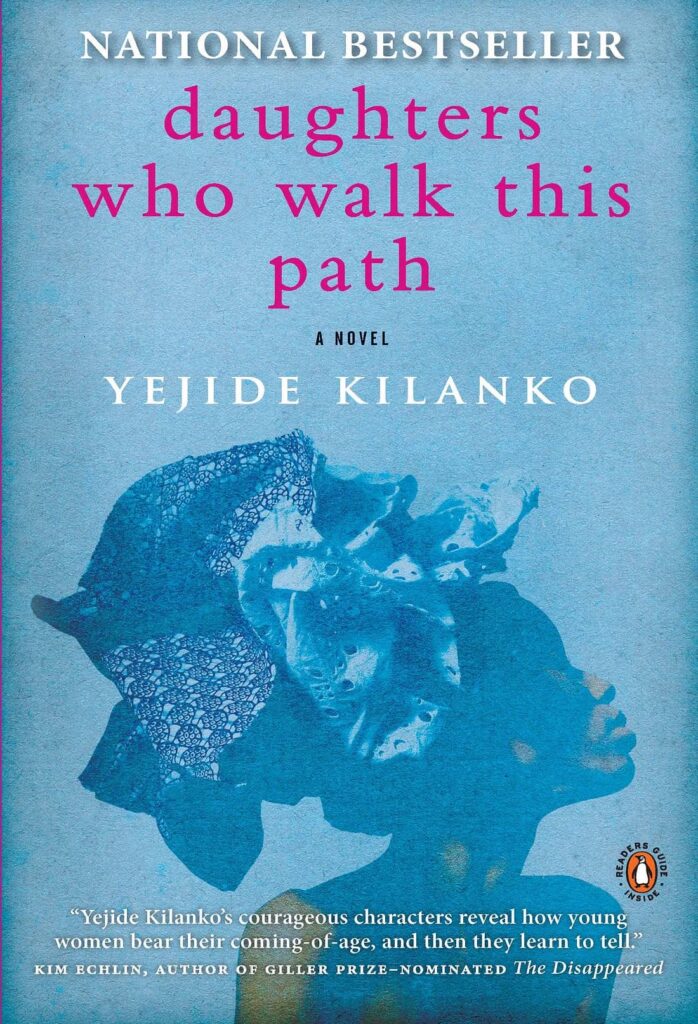
Themes in Daughters Who Walk This Path
Theme of Sexual Abuse
The theme of sexual abuse is one of the most important and powerful themes in Daughters Who Walk This Path by Yejide Kilanko. The novel shows how sexual abuse can affect a young girl’s life, how society responds to it, and how healing is possible with the right support.
The main character, Morayo, is abused by her older cousin Bros T. He touches her inappropriately in her own home, a place that ought to be her safe haven.
Morayo doesn’t fully understand what is happening at first, but she knows it feels wrong. She feels dirty, ashamed, and afraid. When she eventually tells her parents about it, they act like nothing happened. This silence makes her feel even worse.
Daughters Who Walk This Path shows how sexual abuse can destroy a child’s confidence and self-worth. Morayo begins to hate herself and even thinks about harming herself. She struggles with her body image, with trust, and with relationships.
The novel also shows how society often blames the victim and protects the abuser when the abuser is a family member. People are told to be quiet about such things so they don’t “bring shame” to the family. Let’s talk about Morayo’s mother. Given the circumstance, she is expected to comfort her daughter. But what does she do instead? She acts like Morayo has done something wrong.
This theme is painful but important. It helps readers understand the reality many people—especially young girls—face, and why we must listen, care, and speak up.
Theme of Healing
Even though Morayo is badly hurt by the abuse, the novel is not just about her suffering. It is also about healing. Morayo finds hope and comfort in her Aunty Morenike, who teaches her that the abuse was not her fault and that her body is not ruined.
Over time, with support, Morayo starts to heal. She learns to love herself again and eventually finds love with someone who respects her.
Daughters Who Walk This Path thus explores what it means to live with trauma and how a person might begin to recover. Healing is projected as a slow and difficult journey. Understandably, one of the things that makes healing hard for Morayo is the silence around her. The fact that no one talks about it makes her feel alone and unloved. That is where Aunty Morenike came in handy. She helped Morayo heal when the poor girl comes to live with her.
Theme of Family
Family is another important theme in Daughters Who Walk This Path. It is shown as both a source of support and a cause of pain. The book explores how different types of family relationships affect Morayo’s life.
As we can see, Morayo’s abuse does not come from a stranger but from a trusted family member. The fact that the abuse even happens under her parents’ roof also raises questions: How could this happen at home? Where is the protection a child should have from family? Apparently, Morayo’s parents fail her in key moments. They are unaware of her abuse for a long time, and even when she speaks up, they do not respond with care. They only care about their family’s reputation at the expense of their daughter’s hurt.
Not all family members in the book are harmful though. Aunty Morenike is one. She is a true family figure for Morayo. She listens, supports, and encourages Morayo. Morenike’s mother and grandmother had also stood by her when she was abused. This shows that family can be a source of healing when they choose compassion over shame.
The relationship between Morayo and Eniayo is another way the theme of family is explored in the novel. Morayo is protective of her younger sister, and part of her pain comes from feeling she failed to protect her. This bond shows how siblings can share both love and responsibility.
Theme of Female Strength
The theme of female strength is powerfully explored through the lives of Morayo, Aunty Morenike, and other women in the novel. Kilanko portrays strength as the ability to survive, resist, and rise above pain in a society that silences women.
One of the strongest characters in the novel is Aunty Morenike. Like Morayo, she was also abused, but she refuses to be broken by it. Instead of hiding in shame, she builds a new life for herself. She becomes a mother, finishes her education, and becomes a respected teacher. She even provides shelter and emotional support to Morayo.
Female strength is, in a way, defined by the refusal to be silenced. In a culture where women are expected to be quiet and submissive, speaking up is an act of bravery. When Morayo finally tells the truth about what Bros T did, and when Morenike shares her story, they both break the silence that protects abusers. This is a key part of female strength in the novel.
It also manifests beautifully in how women support one another. In this regard, Morayo, Morenike, Mama Ibeji, and others represent a kind of sisterhood. They prove that women can lift each other up with or without outside help.
Theme of Social Stigma
One of the novel’s most powerful sub-themes is how society treats people who are perceived as different. This is explored through the character of Eniayo, who is born with albinism. From the moment of her birth, Eniayo becomes the target of superstitious beliefs and cultural prejudice. Some older family members believe that her condition is a sign of misfortune. In a society where albinism is misunderstood, Eniayo is seen by some as a “curse” despite the fact that her condition is simply a genetic trait.
Yejide Kilanko shines a light on the harmful impact of ignorance and stigma. She shows how even within loving families, outdated beliefs can shape how people are treated. But what makes Eniayo’s role so important in the novel is that she does not allow these beliefs to define her. With the support of her immediate family, Eniayo grows up to be joyful, confident, and full of life.
Characters in Daughters Who Walk This Path
Morayo Ajayi: Morayo is the protagonist of Daughters Who Walk This Path. She is a bright, observant young girl whose coming-of-age journey is central to the novel. She is a survivor of sexual abuse and battles trauma, shame, and self-doubt. Her story explores themes of violation, silence, healing, and resilience.
Eniayo Ajayi: Eniayo is Morayo’s younger sister. She is an albino child whose birth sparks superstitious fears in the extended family. Her presence in the novel challenges societal biases against albinism and reinforces the theme of acceptance and joy amidst difference.
Bros T (Tayo): Bros T is Morayo’s older cousin and abuser. He moves into the family home and molests Morayo. He is a predator hidden in plain sight.
Aunty Morenike: Morenike is Morayo’s mother’s cousin and mentor. A survivor of rape herself, she listens, understands, and offers warmth and care when Morayo needs it most.
Mr. and Mrs. Ajayi: They are Morayo’s parents. To the outside world, they are a respectable, middle-class Nigerian family. They are presented as caring, hardworking, and protective. They provide a stable and supportive home in many practical ways: ensuring their daughters are well-educated, moving to a better house, and offering basic physical needs. However, their emotional limitations become painfully clear when Morayo reveals that she has been sexually abused by her cousin Bros T. Although they take immediate action by sending Bros T away, they do not acknowledge or address the emotional and psychological damage Morayo has suffered. Neither parent sits her down to talk about the abuse, offer comfort, or guide her through the healing process. Mrs. Bisoye Ajayi, in particular, becomes especially cold and withdrawn after the abuse is revealed. She distances herself and focuses on protecting Eniayo, as though Morayo is now a threat or disappointment.
Grandma and Grandpa Ajayi: They are Morayo’s grandparents. They appear in background narratives and family scenes in relation to cultural traditions and generational attitudes. They represent the older generation, whose values are shaped by a deep respect for custom, silence, and social image.
Tomi: She is Morayo’s childhood best friend. Tomi represents the normalcy and safety of childhood before Morayo’s life is disrupted by sexual violence.
Kachi: Kachi is Morayo’s childhood crush and eventual husband.
Ladi: He is Morayo’s university boyfriend.
Chief Komolafe: Komolafe is a wealthy rapist and family friend who abuses young Morenike
Mama Ibeji: She is a community elder known for her assertiveness. She’s not afraid to call out wrong behaviour. This, we can see, when she confronts Chief Komolafe. She is known to wear trousers under her wrapper. She represents everyday feminist resistance.
Aunty Tope: Tope is Bros T’s mother. She loves her son deeply but is overly protective and refuses to see or accept his faults. She indirectly contributes to Bros T’s entitlement and moral decline.
Literary Devices in Daughters Who Walk This Path
First-Person Narration: The story is told through Morayo’s eyes. This gives readers access to her thoughts, emotions, and personal growth.
Flashback: Kilanko shifts between the present and past events in Morayo’s life, especially moments before and after the trauma. She also employs this narrative technique in unearthing Aunty Morenike’s abused past.
Foreshadowing: Morayo’s early discomfort with Bros T’s behaviour (such as sitting too close and unnecessary touching) hints at what is to come.
Symbolism: There are a couple of symbols in the novel. One is Eniayo’s albinism, which symbolises innocence and difference, and also society’s tendency to judge based on appearance or superstition. Another is Morayo’s mirror scenes. Her reaction to her own reflection symbolises her struggle with self-image and the emotional scars of trauma
Irony: Irony is a contrast between expectation and reality. It is used in the novel to highlight the tragic realities many young girls face when the danger comes from those closest to them. The trusted cousin becomes the source of harm. And the parents, who are meant to protect, remain distant and unaware.
Character Foils: They are characters that contrast each other. Take Aunty Morenike vs. Aunty Tope for instance. The former is nurturing and empowering while the latter is enabling and blind to her child’s faults. This contrast is a signification of different parenting approaches and responses to abuse and womanhood.
Receive Literary Updates through our Social Media Channels:
- WhatsApp: Literature PADI
- Telegram: Literature PADI
- YouTube: @literaturepadi
- Facebook: Literature PADI
